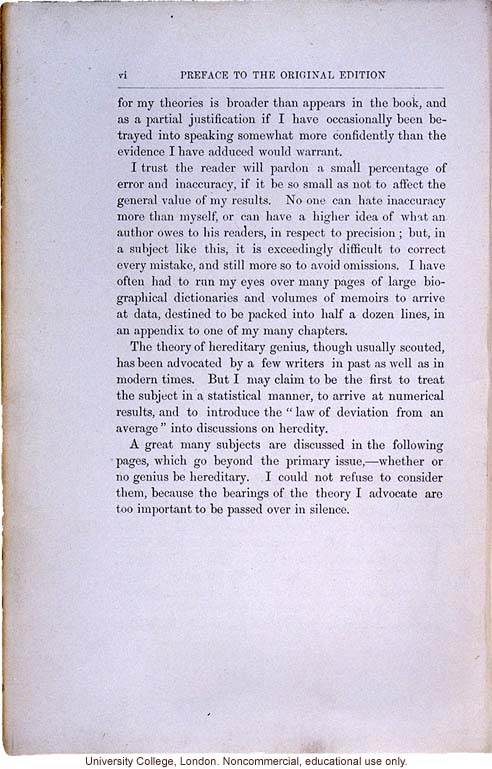vi Preface to the Original Edition
[hairline rule page width]
for my theories is broader than appears in the book, and as a partial justification if I have occasionally been betrayed into speaking somewhat more confidently than the evidence I have adduced would warrant.
I trust the reader will pardon a small percentage of error and inaccuracy, if it be so small as not to affect the general value of my results. No one can hate inaccuracy more than myself, or can have a higher idea of what an author owes to his readers, in respect to precision; but, in a subject like this, it is exceedingly difficult to correct every mistake, and still more so to avoid omissions. I have often had to run my eyes over many pages of large biographical dictionaries and volumes of memoirs to arrive at data, destined to be packed into half a dozen lines, in an appendix to one of my many chapters.
The theory of hereditary genius, though usually scouted, has been advocated by a few writers in past as well as in modern times. But I may claim to be the first to treat the subject in a statistical manner, to arrive at numerical results, and to introduce the "law of deviation from an average" into discussions on heredity.
A great many subjects are discussed in the following pages, which go beyond the primary issue, -- whether or no genius be hereditary. I could not refuse to consider them, because the bearings of theory I advocate are too important to be passed over in silence.
[end]


